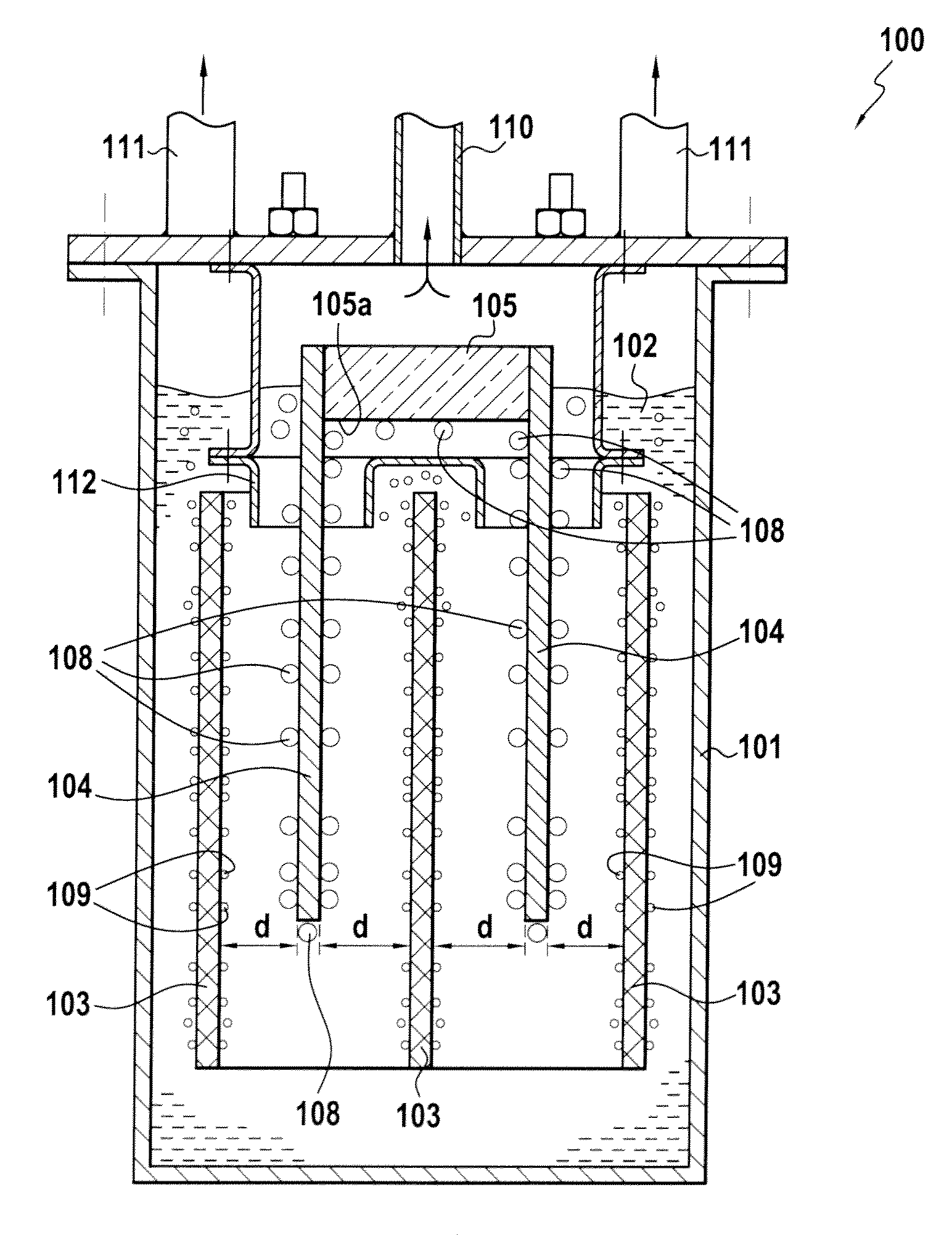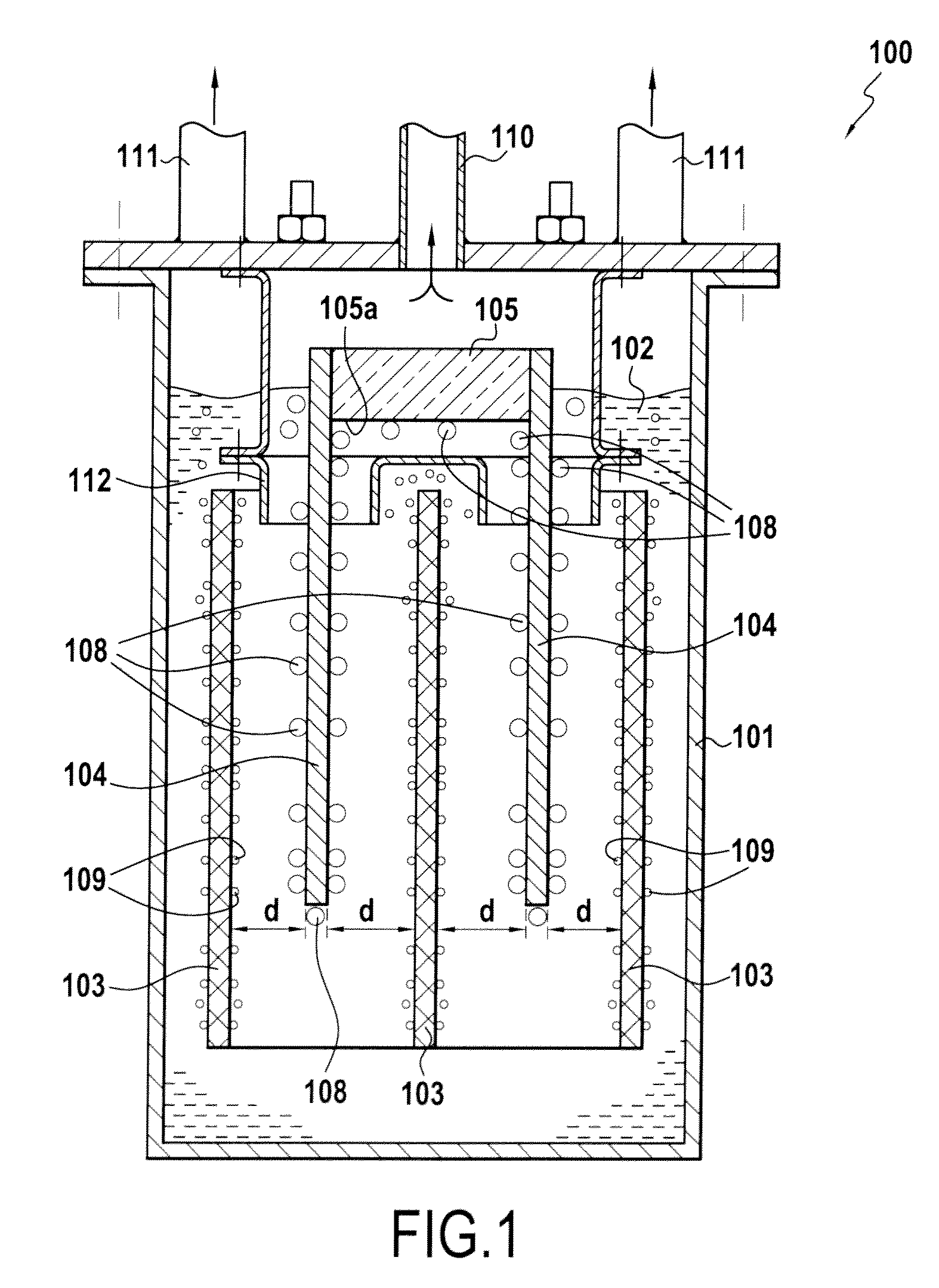Electrolysis installation
a technology of electrolysis and installation, which is applied in the direction of electrodes, diaphragms, photographic processes, etc., can solve the problems of reducing the resistance of separation membranes, and reducing the efficiency of electrolysis installation
- Summary
- Abstract
- Description
- Claims
- Application Information
AI Technical Summary
Benefits of technology
Problems solved by technology
Method used
Image
Examples
Embodiment Construction
[0035]A particular but non-exclusive field of application for the invention is that of electrolysis installations for use in producing gaseous species of a corrosive nature such as fluorine or chlorine, for example. The present invention proposes reducing the distance between the cathodes and the anodes in such installations in order to increase their production efficiency. For this purpose, the present invention proposes interposing a separation membrane between two adjacent series of electrodes (cathodes and anodes), the membrane being constituted by a fine stiff plate of carbon / carbon (C / C) composite material that presents permeability to ions but that remains impermeable relative to the bubbles of gas given off at each electrode. The membrane of C / C material may be used as such, i.e. without surface coating or treatment, or on the contrary it may be coated or treated on one or both of its faces, e.g. for the purposes of improving or reducing its wettability or of giving it parti...
PUM
| Property | Measurement | Unit |
|---|---|---|
| thickness | aaaaa | aaaaa |
| width | aaaaa | aaaaa |
| angle | aaaaa | aaaaa |
Abstract
Description
Claims
Application Information
 Login to View More
Login to View More - R&D
- Intellectual Property
- Life Sciences
- Materials
- Tech Scout
- Unparalleled Data Quality
- Higher Quality Content
- 60% Fewer Hallucinations
Browse by: Latest US Patents, China's latest patents, Technical Efficacy Thesaurus, Application Domain, Technology Topic, Popular Technical Reports.
© 2025 PatSnap. All rights reserved.Legal|Privacy policy|Modern Slavery Act Transparency Statement|Sitemap|About US| Contact US: help@patsnap.com



